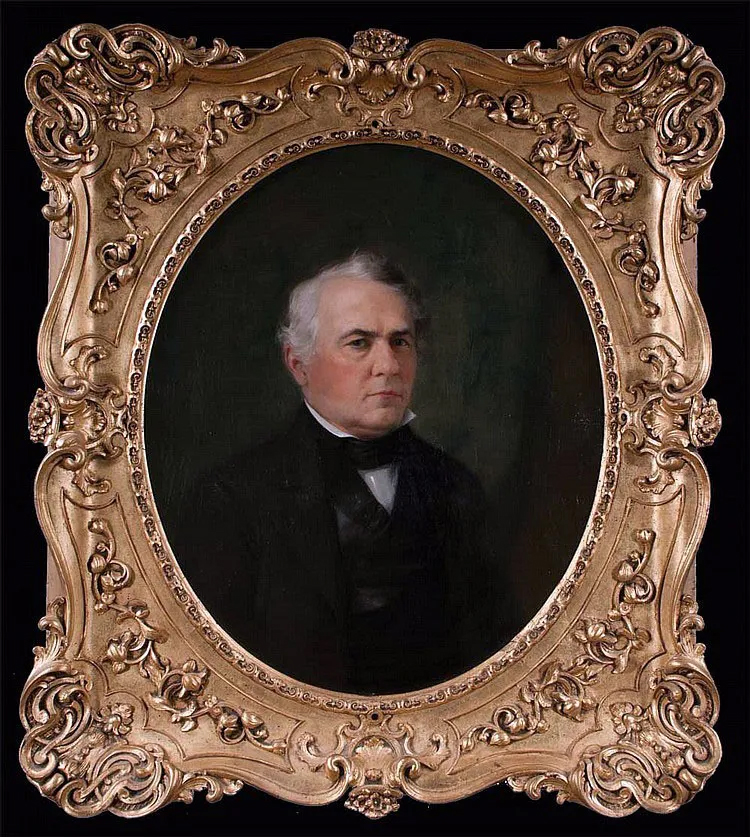Williams, Thomas Lanier
Section 28.2
ID # 281041
Thomas
Lanier
Williams
Pvt.
Cocke’s Regt.
Tenn Mil
War of 1812
Feb. 1, 1786
Dec. 3, 1856
Documentation
Section 28 NE Lot 10
Lot owner John P. Erwin
Lot purchased September 7, 1843
Interment Book: 12-5-1856 Thomas L. Williams
John P. Erwin’s Lot
VA Marker Erected 2011
Thomas Lanier Williams
By Carter G. Baker
Thomas Lanier Williams I (February 1, 1786 – December 3, 1856), was the son of Colonel Joseph Williams and Rebekah (Lanier) Williams. He was born on the family plantation at Panther Creek, Surry County, North Carolina, and was the twin brother of Lewis Williams (1786-1842), fourteen term Congressman from North Carolina. Thomas was a graduate of the University of North Carolina where he delivered the valedictory address.
He studied law and after moving to Knoxville, Tennessee, began his practice there. In 1811, he married Mary Lawson (Polly) McClung whose father was the surveyor who laid out the plat of Knoxville. Her mother, Margaret, was the daughter of General James White, the founder of Knoxville. Polly was one of six girls who attended Blount College, a predecessor of The University of Tennessee, and who were considered among the first co-eds in the country. There is a dormitory at U-T named for her.
Thomas was a private soldier in the East Tennessee Volunteers, commanded by his brother Colonel John Williams, in the War of 1812. The Volunteers were in service from December 1812 to March 1813 and were sent to Spanish East Florida where they defeated the Seminoles in two battles. As a result, John Williams was appointed commander of a Regular Army regiment, the 39th Infantry. By 1814, Andrew Jackson was fighting the Creek Indians in Alabama and was in a desperate situation. Although he had conflicting orders to go to New Orleans, John was convinced to march to Jackson’s aid by Thomas and Hugh Lawson White, later a candidate for President of the US. White was John’s brother-in-law and the uncle of Thomas’ wife, Polly, who made the 39th Infantry’s flag. It is still owned by a family member and is on display at the East Tennessee Historical Society museum in Knoxville. The 39th turned the tide at the Battle of Horseshoe Bend, though the Williamses and Jackson soon became political enemies.
Thomas was a Tennessee state representative, state senator, justice of the state supreme court, and from 1836 to 1852 was Chancellor of Tennessee. He is considered the “father of equity law” in Tennessee and only two of his many decisions were ever reversed on appeal. Polly died in 1828 and is buried in Knoxville.
Thomas died in Nashville while visiting his sister, Frances Lanier (Williams) Erwin and her husband, John Patton Erwin. He is buried in the Nashville City Cemetery in the Erwin lot on Oak Street. His long unmarked grave has recently had a military stone installed. He is the 3x great uncle of Thomas Lanier Williams III, better known as the playwright Tennessee Williams.
Williams, Samuel C. “A Forgotten Campaign”, Tennessee Historical Magazine, Vol. VIII, No. 4, January 1925.
Williams: 300 Years of Leadership, compiled by Lewis and Lanier Williams, privately printed, 1997.
Rededication of the Col. John Williams House, an unpublished ms by Alex Brandau III, 2008.
The Making of a Southerner: William Barclay Napton’s Private Civil War, Phillips, Christopher. (Columbia: University of Missouri Press), 2008. He was TLW’s son-in-law.
CLICK HERE for obituaries for Thomas Lanier Williams
Judge Thomas Lanier Williams I. Probably painted by Knoxville artist Lloyd Branson (1853-1925). Image courtesy of East Tennessee Historical Society, Knoxville.


